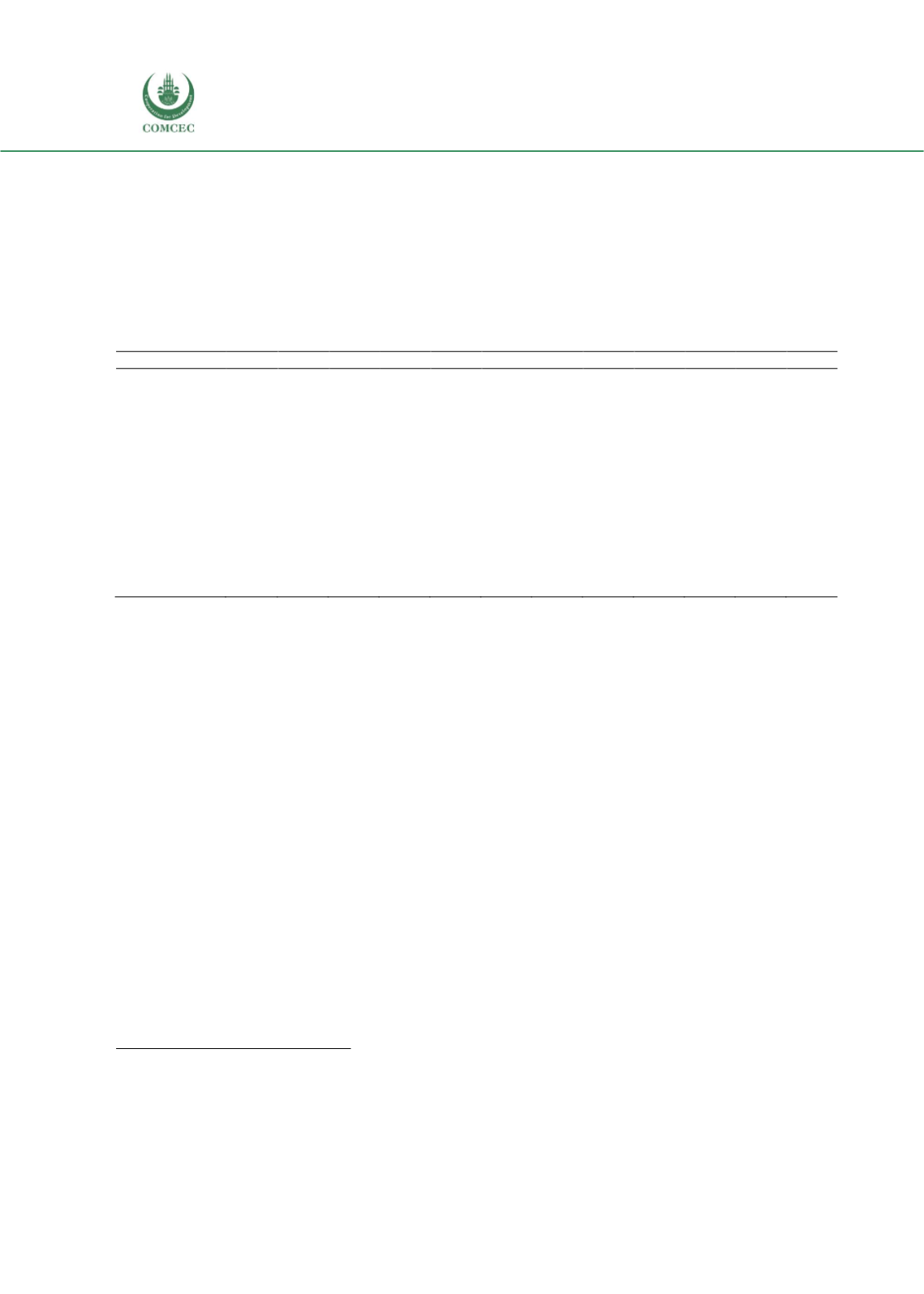

Analysis of Agri-Food Trade Structures
To Promote Agri-Food Trade Networks
In the Islamic Countries
88
To formalize these insights, Table 24 presents in degree centrality calculations for Cameroon
over the last decade. For almost all products, there has been a noticeable increase in the diversity
of import sources over time. The table reinforces the view that import sources are more diverse
than would be suggested by the level of product concentration in imports. The evidence suggests
that Cameroon’s import geography is more diversified than its export geography in a general
sense, although the two leading export products are heavily diversified. The table also supports
the conclusion that Cameroon’s trade network on the import side stretches over multiple
regions, according to the interplay of geography, policy, and comparative advantage.
Table 24: In Degree Centrality for Cameroon's Main Agricultural Imports, 2005-2016
2005
2006 2007 2008 2009 2010 2011 2012 2013 2014 2015 2016
Fish
29
24
25
33
29
30
30
31
36
33
38
35
Wheat
28
26
39
38
35
41
39
46
43
41
45
38
Rice
9
5
5
6
10
10
6
7
10
4
9
6
Animal feed
16
22
16
24
22
23
23
30
25
23
24
21
Other edible
products
14
18
17
25
29
22
24
22
28
29
29
26
Alcoholic
beverages
46
47
53
54
51
45
53
61
62
63
66
61
Milk
28
26
32
42
37
34
31
33
42
34
40
34
Palm oil
8
11
8
13
16
12
11
11
9
8
6
9
Cereals
19
14
20
26
20
22
23
23
29
28
27
32
Sugars and
sugar
preparations
23
22
26
26
25
23
25
31
34
28
29
28
Source: UN Comtrade.
Agriculture Quality Framework
The agriculture quality framework is not cohesive or harmonized across various points in the
sector, As of 2015, Cameroon had not entered into any Mutual Recognition Agreements with
regard to agri-food accreditation and does not accept foreign tests or certificates.
43
Instead, local
and imported foods have been required to follow mandatory labelling prescriptions.
Information provided on perishables should include expiration date, conformitymark, producer
and production date in both French and English
44
Local and Regional Quality Labelling Scheme
As of 2015, Cameroon had not entered into any Mutual Recognition Agreements with regard to
agri-food accreditation and does not accept foreign tests or certificates.
45
Instead, local and
imported foods have been required to follow mandatory labelling prescriptions. Information
provided on perishables should include expiration date, conformity mark, producer and
production date in both French and English
46
There are no government approved labelling
schemes for genetically modified foods, or halal agri-food products but steps have been taken
in the private and non-governmental organization sectors to encourage geographic labelling.
For example: With the initial involvement of about 100 producers including a large international
company, the Penja Pepper received a Protected Geographic Indication (GI) label from the
43
IBP Inc. (2015).
Cameroon Investment, Trade Laws and Regulations Handbook: Volume 1 Strategic Information and
Regulations
. USA: International Business Publications.
44
Ibid
45
Ibid.
46
Ibid.
















